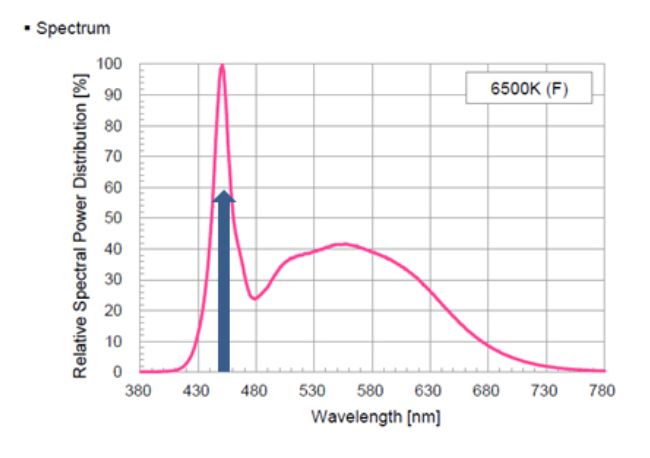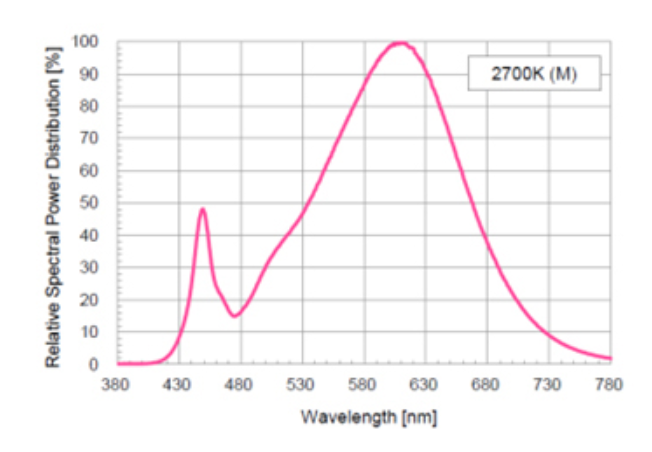By: Rodney Smith
Director of Energy Independence for Emerald Skyline Corporation
Inventor of Bio-Light
Humans evolved on Earth over thousands of years before the invention of artificial light, under natural light  conditions of sunlight, moonlight, and a relatively little bit of fire light. These natural light conditions are reflected inthe physical structure of the eye, with cones being tuned to daylight and rods to night time light conditions. Humans are diurnal (daytime) beings, while some other animals are nocturnal, so our normal pattern of wakefulness and activity is during the daytime.
conditions of sunlight, moonlight, and a relatively little bit of fire light. These natural light conditions are reflected inthe physical structure of the eye, with cones being tuned to daylight and rods to night time light conditions. Humans are diurnal (daytime) beings, while some other animals are nocturnal, so our normal pattern of wakefulness and activity is during the daytime.
There is another form of light sensor in the eye discovered more recently that does not contribute directly to sight yet plays a role in secretion of melatonin: the intrinsically photosensitive retinal ganglion cells (pRGC).
During the past ten years brain scientists have discovered that in addition to patterns of light being transmitted via the optic nerve to the visual center in the brain, there is also a branch that transmits data regarding light conditions to a command center in the brain called the suprachiasmatic nucleus (SCN).
Light and the Endocrine System
The SCN processes the light data and sends command signals to several glands in the endocrine system to either secrete or suppress secretion of certain hormones critical to normal body function. The pineal gland, in the hypothalamus in the brain, suppresses secretion of melatonin in the presence of bright white light, specifically when the SCN has identified a narrow 10 nanometer band of light spectrum (out of 330 nanometers of human visible light spectrum) from 450 to 460 nanometers.

Action spectrum for melatonin regulation in humans
When melatonin secretion is suppressed we become more alert. Melatonin secretion normally occurs when exposure to the bright white light diminishes, e.g. at sundown, but only does so if the trigger has been set by bright white light exposure earlier in the day. Melatonin also serves as a powerful antioxidant which floods the body with natural anti-cancer agents while we sleep.1
The adrenal gland is also largely controlled by the SCN based on light conditions in an opposite way from melatonin. Cortisol secretion is stimulated in the presence of bright white light and suppressed normally at night. Cortisol serves as a wake up call to the body, raising our core body temperature, heart rate, and blood pressure from a sleep state, and is also a factor in normal digestion. If the SCN does not signal the adrenal gland to secrete cortisol, we may be tired and listless. Changes in our digestive system could cause abnormal processing of foods especially carbohydrates and can be a factor in hypoglycemia associated with diabetes.3
Light and the Elderly
 People that lack exposure to natural sunlight are the most prone to have issues with mental and physical well-being resulting from abnormal hormonal secretion. Many elderly people lack adequate sunlight exposure. Furthermore the lens of the eye thickens and yellows with age, resulting in a 75% reduction in light passing through the lens by age 75. The yellowing of the lens reduces the blue end of the light spectrum where the circadian rhythm spectrum is found. The result can be sleep deprivation and the many issues that accompany it, including depression and circulatory issues, among others.
People that lack exposure to natural sunlight are the most prone to have issues with mental and physical well-being resulting from abnormal hormonal secretion. Many elderly people lack adequate sunlight exposure. Furthermore the lens of the eye thickens and yellows with age, resulting in a 75% reduction in light passing through the lens by age 75. The yellowing of the lens reduces the blue end of the light spectrum where the circadian rhythm spectrum is found. The result can be sleep deprivation and the many issues that accompany it, including depression and circulatory issues, among others.
Unfortunately, traditional lighting does not provide the specific spectrum of light required between 450 and 460 nanometers for normal secretion and suppression of melatonin. Even with specialized “natural” light fluorescent tubes, the required light spectrum actually is at a low point in providing the critical spectrum while there are peaks on either side of the narrow band. The problem of proper light exposure cannot be solved by simply increasing the level of fluorescent light.
Fortunately, LED lighting is far more controllable in terms of light spectrum as well as in terms of dimming and low glare if well designed. Light being emitted from a source can be measured in spectral power density (SPD) at specific light spectrums measured in nanometers. It is possible to utilize LEDs in a fixture that has a perfect score of 100% SPD at the desired light spectrum. This is important, as the critical light spectrum can be passively delivered at reasonable levels of light in the ambient environment. Previously, light therapy devices required a patient to actively stare into a bright light box for two hours – which is an unpleasant experience to say the least – and not something many elderly residents can be expected to do. Delivery of the needed light spectrum passively will help assure all residents receive the desirable light and do not require active therapy.
If the LED fixture is designed as a side-lit panel, the light is indirect light and a pleasant glow to the eye, even at the higher light levels recommended by the Illuminating Engineering Society (IES) for elder care facilities. With traditional lighting it is very difficult to even achieve the recommended light levels in a tolerable manner, and impossible to provide the critical light spectrum for circadian light. Assuring that elderly residents have adequate light levels to enjoy their interests and hobbies will raise their activity levels and mental engagement.
There is a second part to the required light. While it is critical to have the bright white light especially in the morning, it is equally important to have warmer light with less blue light later in the afternoon and in the evening. If there is only bright white later in the day, melatonin secretion will continue to be suppressed.
LED lends itself to control so with modern wireless radio frequency control systems such as ZigBee, which is an IEEE telecommunication standard widely deployed by electrical power utilities to communicate wirelessly with smart meters and appliance among others, that facilitates implementation of automated lighting controls on a facility-wide basis for such functions as circadian light scheduling. By using an LED light fixture with both bright white and warm diodes, it is possible to control the light so the bright white is provided in the morning when needed and the warm light later in the day.
This is similar to how the light from the sun changes as the evening arrives. Furthermore, a ZigBee telecommunications platform can also connect with low cost light sensors to provide ambient light data to the control system that can adjust the level of intensity of the light as well as provide the capability to control other devices such as window blinds to further reduce energy consumption. The lighting system can also be linked through ZigBee to other automated sensor and control systems, such as fire detection and security systems.
In addition to the host of wellness benefits described above, LED lights can deliver up to 85% reduction in electricity consumption as well as providing maintenance-free lighting for up to 100,000 hours. For a light fixture on 24 hours per day, such as in a hallway, 100,000 hours of operation equals approximately 12 years. Light bulb maintenance is a significant component of facility maintenance and can free-up valuable employees to perform other maintenance tasks.
Recommendations
The flexibility of control of LED technology is arriving at a time when we can put it to good use for those living primarily indoors, as the elderly do. Opportunities now exist to deploy lighting designed to promote healthy endocrine system function. New eldercare facilities should be designed from a lighting perspective to IES standards, and they can also promote wellness of residents. The improved health can delay transition from Independent Living, to Assisted Living, to Skilled Nursing or Memory Care. In addition to the benefit to residents, making the most of LED capabilities can also reduce hospital transports, resulting in healthier bottom lines for operators.
For more information contact Rodney at rsmith@emeraldskyline.com
Footnotes:
1 The American Cancer Society www.cancer.com
2 Brainard, G.C. et al, Action Spectrum for Melatonin Regulation in Humans: Evidence for a Novel Circadian Photoreceptor, Journal of Neuroscience 21 (2001) 16, pp 6405-6412.
3 The Cortisol Awakening Response-applications and implications for sleep medicine, G.J. Elder, M.A. Wetherell, N.L. Barclay, J.G. Ellis, Sleep Medicine Review 2014 June; 18(3):215-24.
Additional Reading:
Light and Human Health: An Overview of the Impact of Optical Radiation on Visual, Circadian, and Neurobehavioral Responses, Illuminating Engineering Society, M.C. Figueira, G.C. Brainard, S. W. Lockley, V.L. Revell, R. White, TM-18-08, 2008
Lighting for Health: LEDs in the New Age of Illumination, United States Department of Energy, 2014 The Impact of Light in Outcomes in Healthcare Settings, A. Joseph, The Center for Health Design, 2006
CircadianDisturbanceinPatientswithAlzheimer’sDisease,D.A.Weldemichael,G.T.Grossberg, International Journal of Alzheimer’s Disease, 2010
Lighting and the Visual Environment for Senior Living, Illuminating Engineering Society, ANSI/IES RP-28-07, 2007
SIRT1 Mediates Central Control in the SCN by a Mechanism that Decays with Aging, H.C. Chung, L. Guarante, Cell 153, 1448-1460, 2013
The Cortisol Awakening Response in Context, A. Clow, F. Hucklebridge, L. Thorn, International Review of Neurobiology, NIH, 2010; 93: 153-75.





